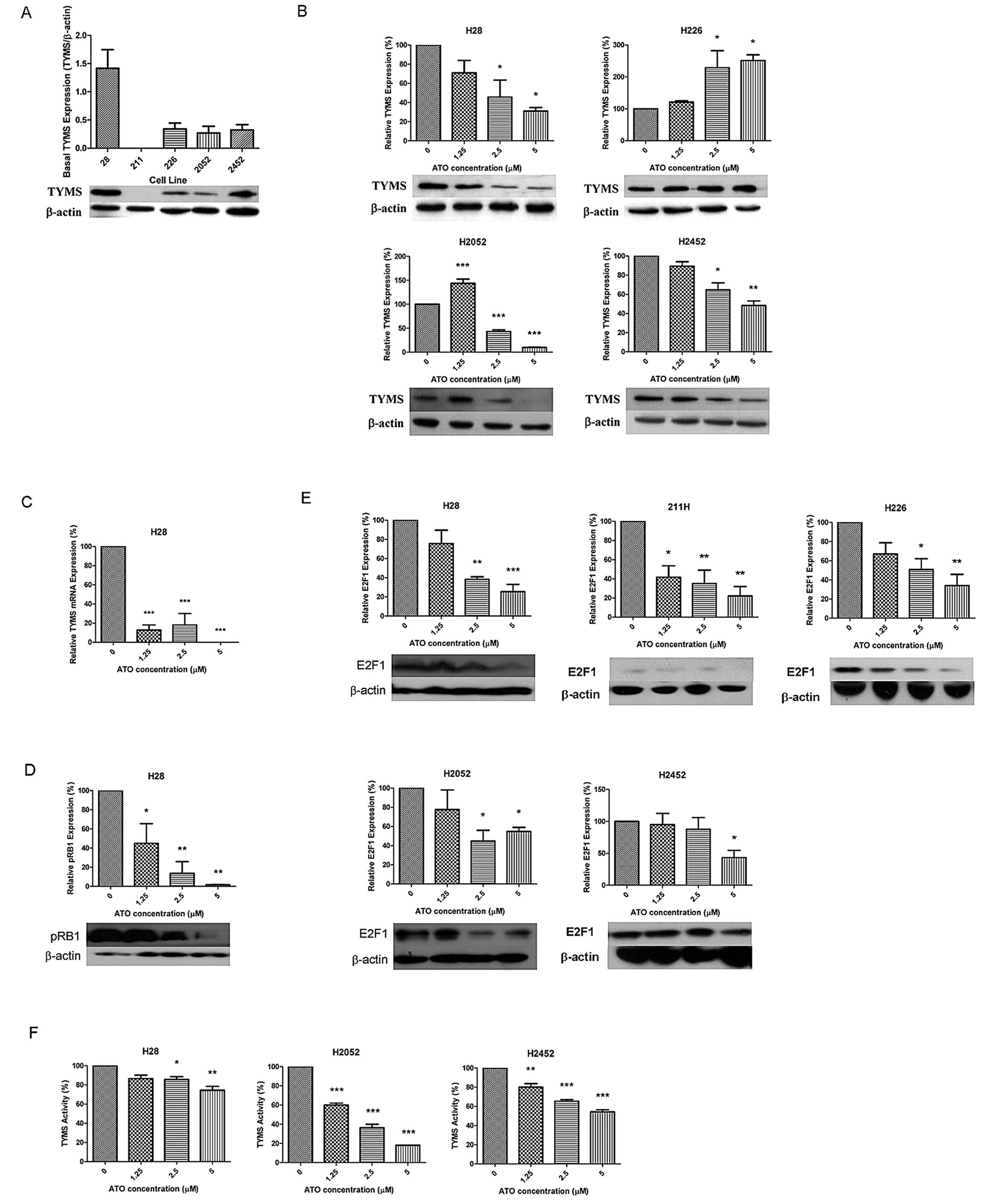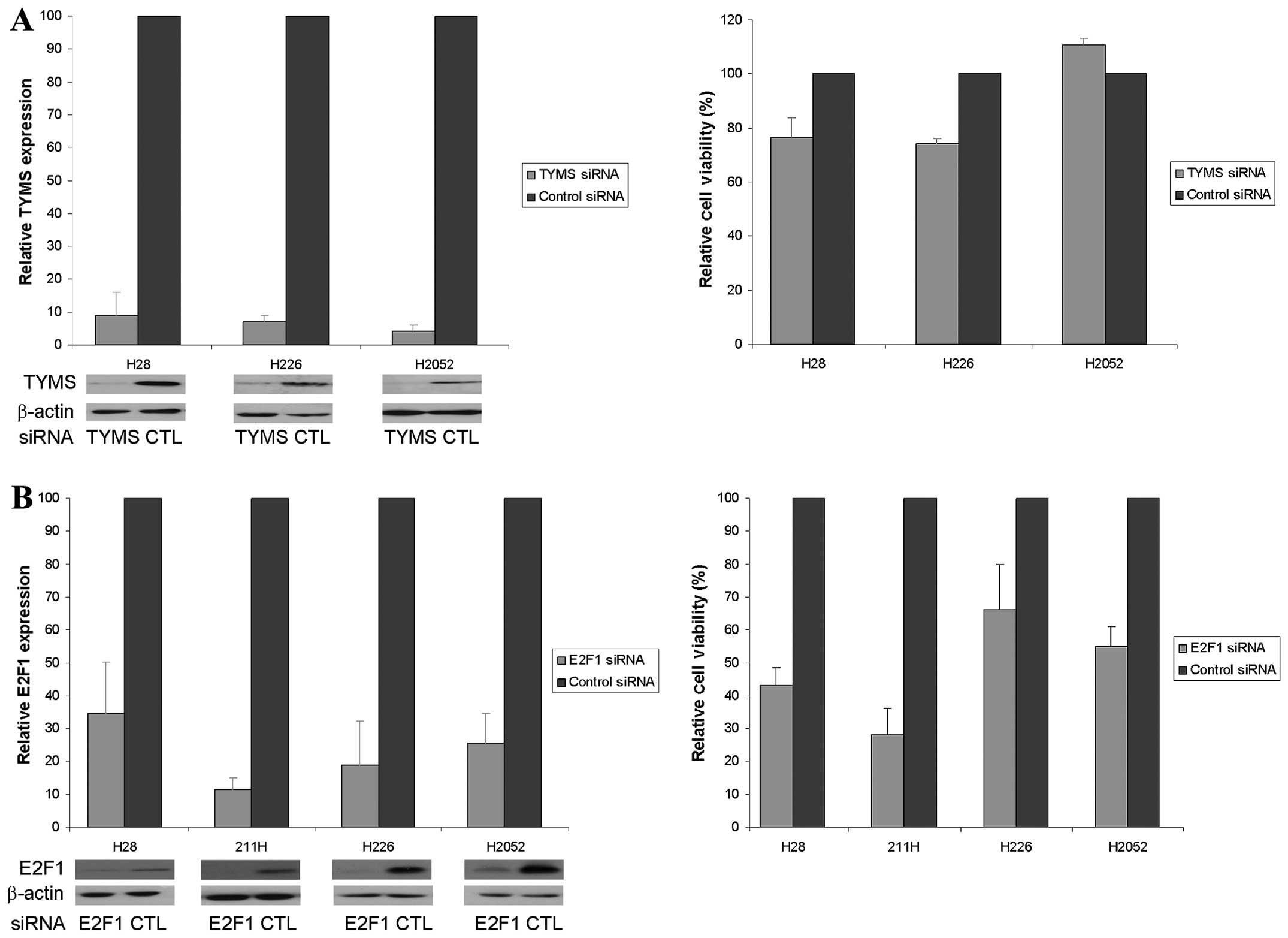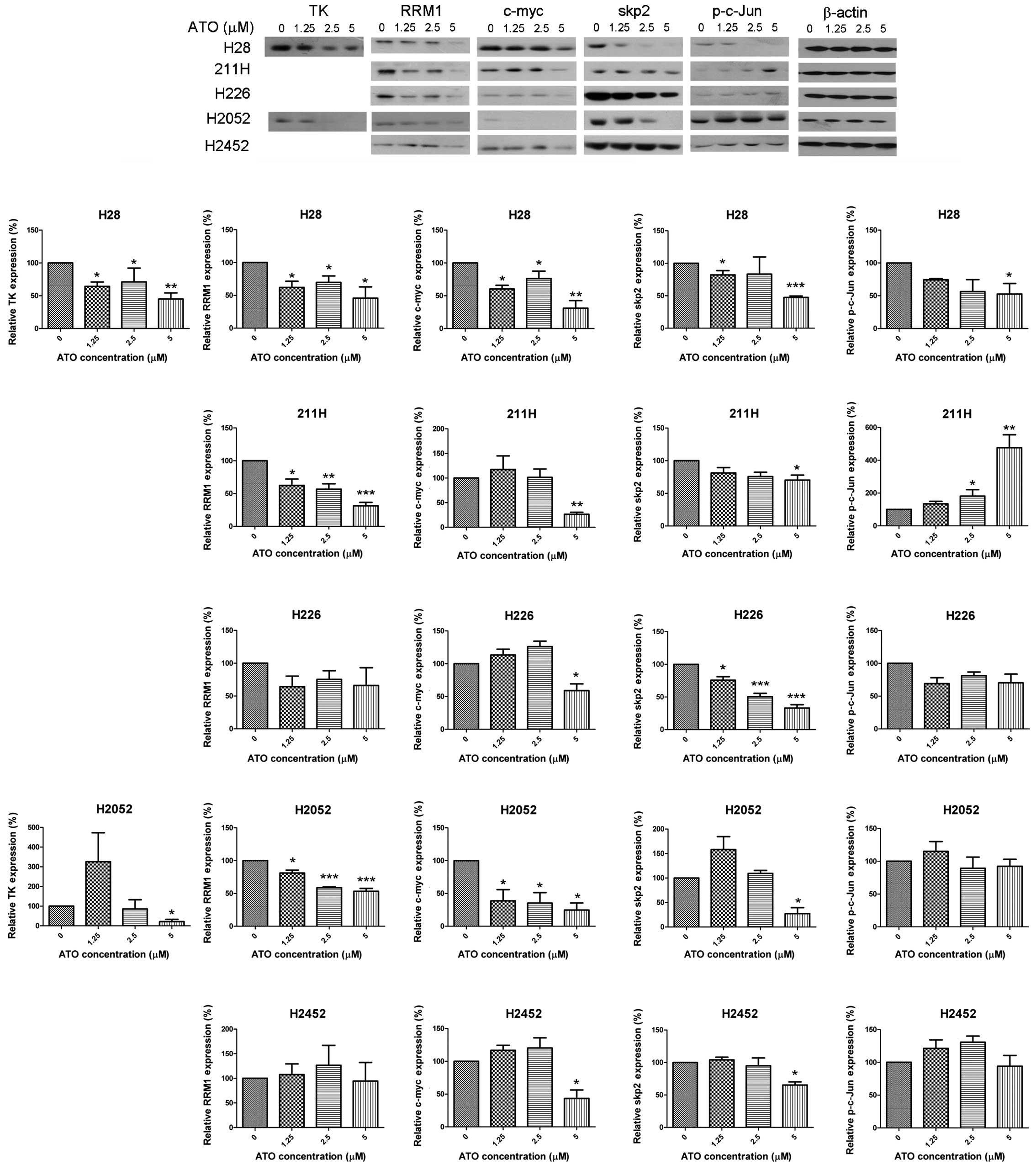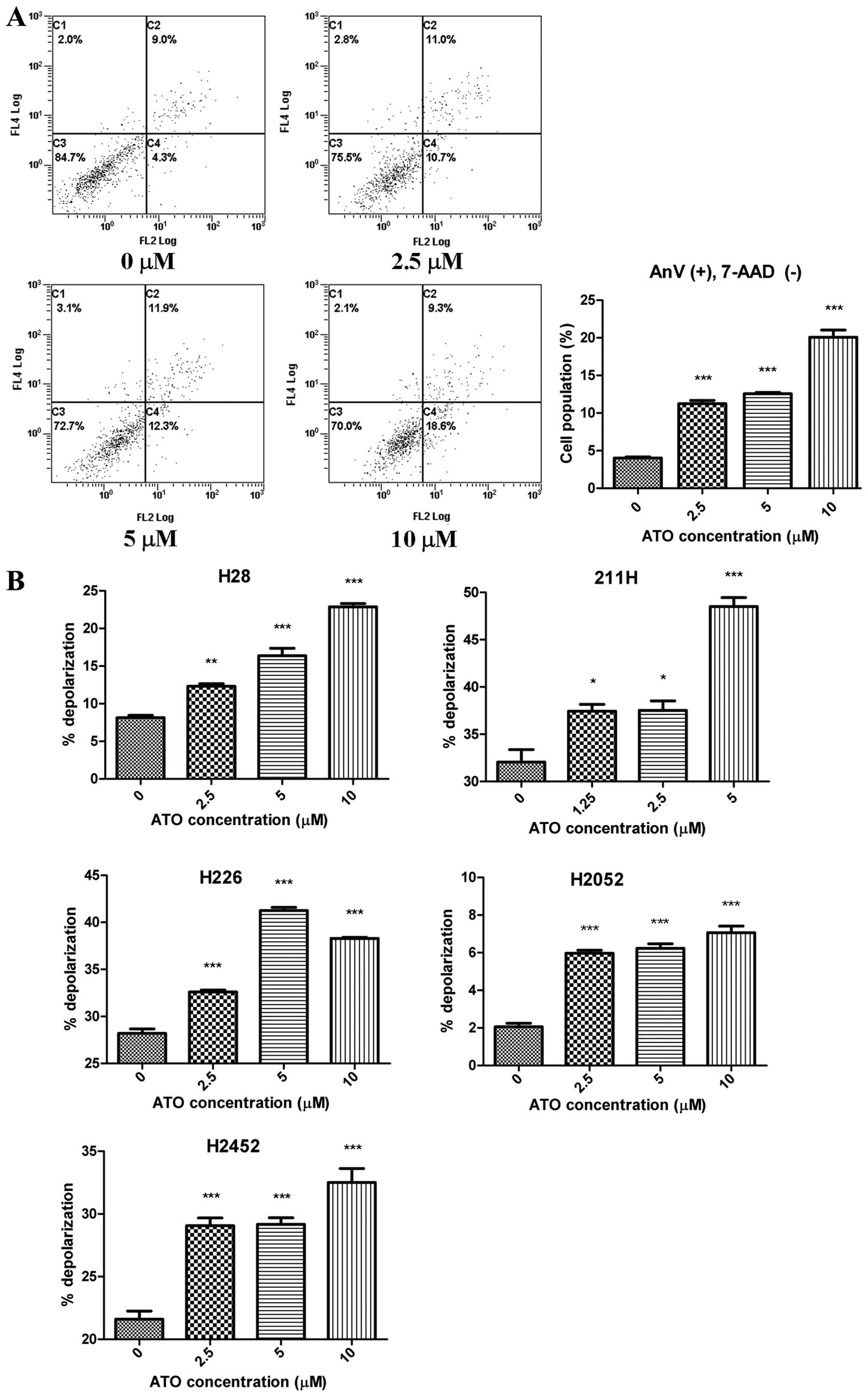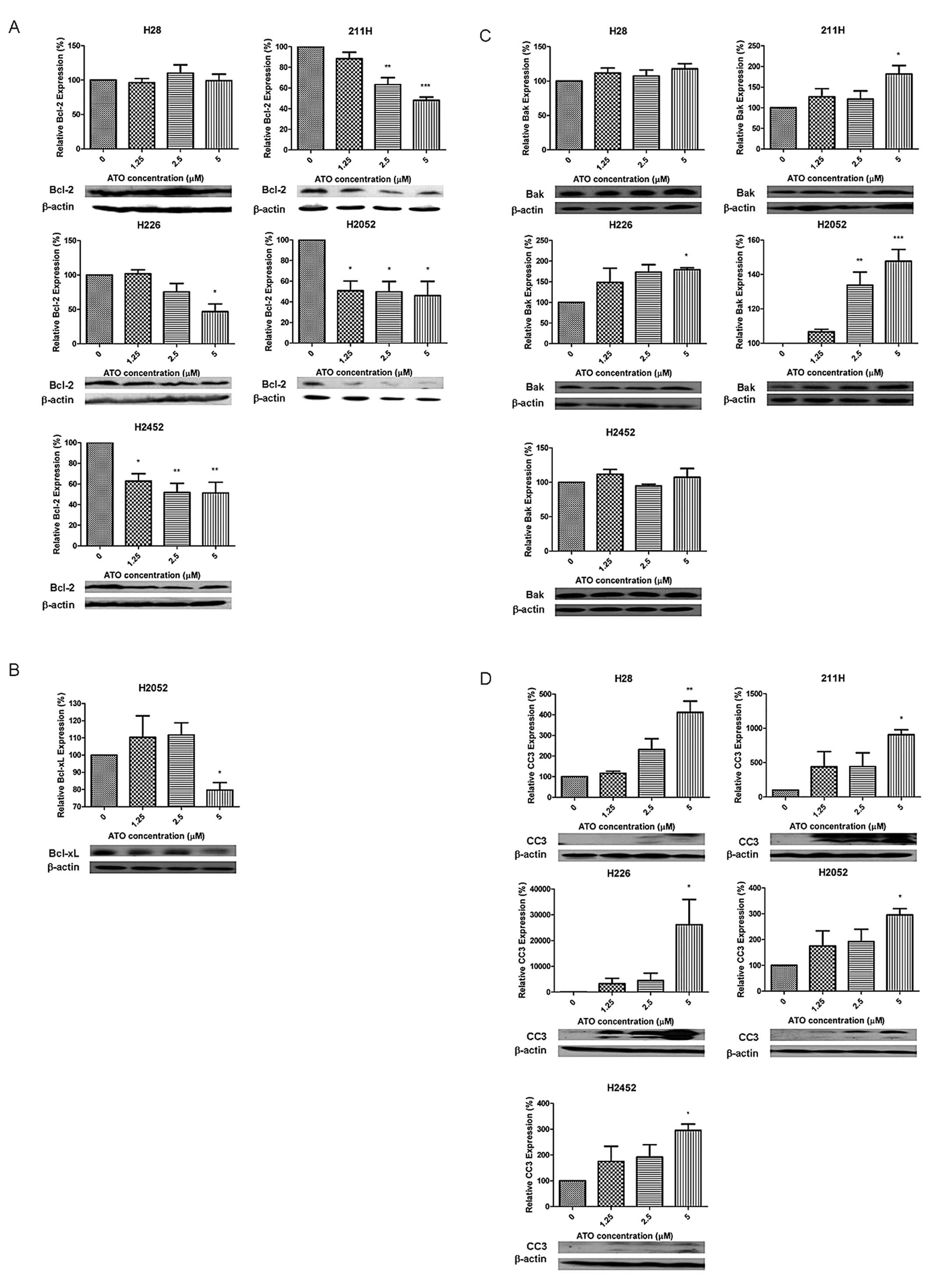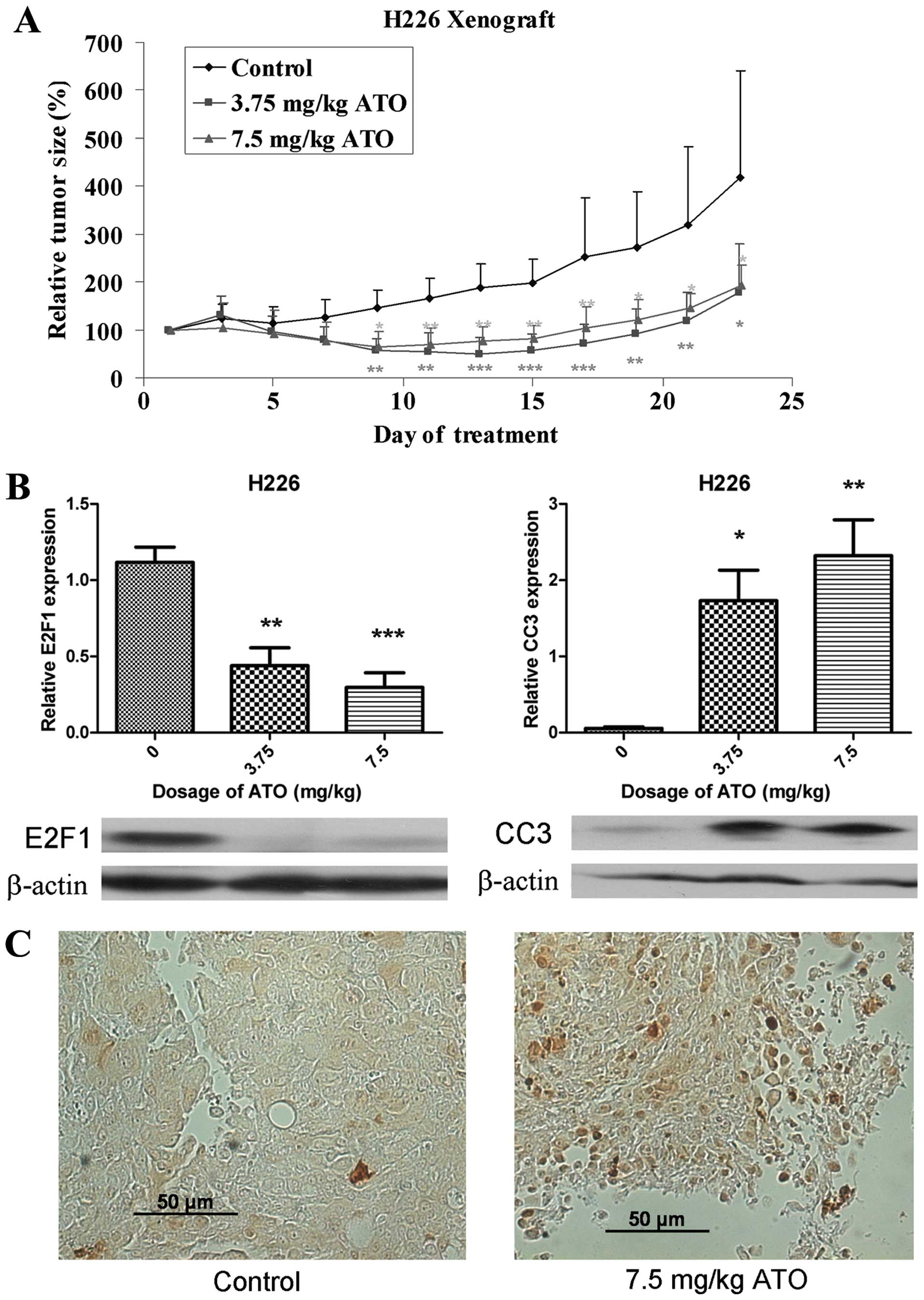|
1
|
Borasio P, Berruti A, Bille A, et al:
Malignant pleural mesothelioma: clinicopathologic and survival
characteristics in a consecutive series of 394 patients. Eur J
Cardiothorac Surg. 33:307–313. 2008. View Article : Google Scholar : PubMed/NCBI
|
|
2
|
Abakay A, Abakay O, Tanrikulu AC, et al:
Effects of treatment regimens on survival in patients with
malignant pleural mesothelioma. Eur Rev Med Pharmacol Sci.
17:19–24. 2013.PubMed/NCBI
|
|
3
|
Rahman L, Voeller D, Rahman M, et al:
Thymidylate synthase as an oncogene: a novel role for an essential
DNA synthesis enzyme. Cancer Cell. 5:341–351. 2004. View Article : Google Scholar : PubMed/NCBI
|
|
4
|
Bunn PA Jr: Incorporation of pemetrexed
(Alimta) into the treatment of non-small cell lung cancer (thoracic
tumors). Semin Oncol. 29:17–22. 2002. View Article : Google Scholar : PubMed/NCBI
|
|
5
|
Sigmond J, Backus HH, Wouters D, Temmink
OH, Jansen G and Peters GJ: Induction of resistance to the
multitargeted antifolate Pemetrexed (ALIMTA) in WiDr human colon
cancer cells is associated with thymidylate synthase
overexpression. Biochem Pharmacol. 66:431–438. 2003. View Article : Google Scholar
|
|
6
|
Lustgarten DE, Deshpande C, Aggarwal C, et
al: Thymidylate synthase and folyl-polyglutamate synthase are not
clinically useful markers of response to pemetrexed in patients
with malignant pleural mesothelioma. J Thorac Oncol. 8:469–477.
2013. View Article : Google Scholar
|
|
7
|
Mairinger F, Vollbrecht C, Halbwedl I, et
al: Reduced folate carrier and folylpolyglutamate synthetase, but
not thymidylate synthase predict survival in pemetrexed-treated
patients suffering from malignant pleural mesothelioma. J Thorac
Oncol. 8:644–653. 2013. View Article : Google Scholar
|
|
8
|
Fennell DA and Rudd RM: Defective
core-apoptosis signalling in diffuse malignant pleural
mesothelioma: opportunities for effective drug development. Lancet
Oncol. 5:354–362. 2004. View Article : Google Scholar : PubMed/NCBI
|
|
9
|
Kumana CR, Au WY, Lee NS, et al: Systemic
availability of arsenic from oral arsenic-trioxide used to treat
patients with hematological malignancies. Eur J Clin Pharmacol.
58:521–526. 2002. View Article : Google Scholar : PubMed/NCBI
|
|
10
|
Lam SK, Mak JC, Zheng CY, Li YY, Kwong YL
and Ho JC: Downregulation of thymidylate synthase with arsenic
trioxide in lung adenocarcinoma. Int J Oncol. 44:2093–2102.
2014.PubMed/NCBI
|
|
11
|
Subbarayan PR, Lee K and Ardalan B:
Arsenic trioxide suppresses thymidylate synthase in 5-FU-resistant
colorectal cancer cell line HT29 in vitro re-sensitizing cells to
5-FU. Anticancer Res. 30:1157–1162. 2010.PubMed/NCBI
|
|
12
|
Eguchi R, Fujimori Y, Takeda H, et al:
Arsenic trioxide induces apoptosis through JNK and ERK in human
mesothelioma cells. J Cell Physiol. 226:762–768. 2011. View Article : Google Scholar : PubMed/NCBI
|
|
13
|
You M, Varona-Santos J, Singh S, Robbins
DJ, Savaraj N and Nguyen DM: Targeting of the Hedgehog signal
transduction pathway suppresses survival of malignant pleural
mesothelioma cells in vitro. J Thorac Cardiovasc Surg. 147:508–516.
2014. View Article : Google Scholar : PubMed/NCBI
|
|
14
|
Slee EA and Lu X: Requirement for
phosphorylation of P53 at Ser312 in suppression of chemical
carcinogenesis. Sci Rep. 3:31052013.PubMed/NCBI
|
|
15
|
Li YY, Lam SK, Mak JC, Zheng CY and Ho JC:
Erlotinib-induced autophagy in epidermal growth factor receptor
mutated non-small cell lung cancer. Lung Cancer. 81:354–361. 2013.
View Article : Google Scholar : PubMed/NCBI
|
|
16
|
Pressacco J, Mitrovski B, Erlichman C and
Hedley DW: Effects of thymidylate synthase inhibition on thymidine
kinase activity and nucleoside transporter expression. Cancer Res.
55:1505–1508. 1995.PubMed/NCBI
|
|
17
|
Kousparou CA, Yiacoumi E, Deonarain MP and
Epenetos AA: Generation of a selectively cytotoxic fusion protein
against p53 mutated cancers. BMC Cancer. 12:3382012. View Article : Google Scholar : PubMed/NCBI
|
|
18
|
Shen ZX, Chen GQ, Ni JH, et al: Use of
arsenic trioxide (As2O3) in the treatment of
acute promyelocytic leukemia (APL): II. Clinical efficacy and
pharmacokinetics in relapsed patients. Blood. 89:3354–3360.
1997.PubMed/NCBI
|
|
19
|
Aballay LR, del Diaz MP, Francisca FM and
Munoz SE: Cancer incidence and pattern of arsenic concentration in
drinking water wells in Cordoba, Argentina. Int J Environ Health
Res. 22:220–231. 2012. View Article : Google Scholar : PubMed/NCBI
|
|
20
|
Naujokas MF, Anderson B, Ahsan H, et al:
The broad scope of health effects from chronic arsenic exposure:
update on a worldwide public health problem. Environ Health
Perspect. 121:295–302. 2013. View Article : Google Scholar : PubMed/NCBI
|
|
21
|
de The H, Le Bras M and
Lallemand-Breitenbach V: The cell biology of disease: Acute
promyelocytic leukemia, arsenic, and PML bodies. J Cell Biol.
198:11–21. 2012.PubMed/NCBI
|
|
22
|
Cai X, Shen YL, Zhu Q, et al: Arsenic
trioxide-induced apoptosis and differentiation are associated
respectively with mitochondrial transmembrane potential collapse
and retinoic acid signaling pathways in acute promyelocytic
leukemia. Leukemia. 14:262–270. 2000. View Article : Google Scholar
|
|
23
|
Jing Y, Dai J, Chalmers-Redman RM, Tatton
WG and Waxman S: Arsenic trioxide selectively induces acute
promyelocytic leukemia cell apoptosis via a hydrogen
peroxide-dependent pathway. Blood. 94:2102–2111. 1999.PubMed/NCBI
|
|
24
|
Mahieux R, Pise-Masison C, Gessain A, et
al: Arsenic trioxide induces apoptosis in human T-cell leukemia
virus type 1- and type 2-infected cells by a caspase-3-dependent
mechanism involving Bcl-2 cleavage. Blood. 98:3762–3769. 2001.
View Article : Google Scholar
|
|
25
|
Park WH, Seol JG, Kim ES, et al: Arsenic
trioxide-mediated growth inhibition in MC/CAR myeloma cells via
cell cycle arrest in association with induction of cyclin-dependent
kinase inhibitor, p21, and apoptosis. Cancer Res. 60:3065–3071.
2000.
|
|
26
|
Shim MJ, Kim HJ, Yang SJ, Lee IS, Choi HI
and Kim T: Arsenic trioxide induces apoptosis in chronic
myelogenous leukemia K562 cells: possible involvement of p38 MAP
kinase. J Biochem Mol Biol. 35:377–383. 2002. View Article : Google Scholar : PubMed/NCBI
|
|
27
|
Wang ZG, Rivi R, Delva L, et al: Arsenic
trioxide and melarsoprol induce programmed cell death in myeloid
leukemia cell lines and function in a PML and PML-RARalpha
independent manner. Blood. 92:1497–1504. 1998.PubMed/NCBI
|
|
28
|
Gorgoulis VG, Zacharatos P, Mariatos G, et
al: Transcription factor E2F-1 acts as a growth-promoting factor
and is associated with adverse prognosis in non-small cell lung
carcinomas. J Pathol. 198:142–156. 2002. View Article : Google Scholar : PubMed/NCBI
|
|
29
|
Zacharatos P, Kotsinas A, Evangelou K, et
al: Distinct expression patterns of the transcription factor E2F-1
in relation to tumour growth parameters in common human carcinomas.
J Pathol. 203:744–753. 2004. View Article : Google Scholar : PubMed/NCBI
|
|
30
|
Tsuji AB, Sogawa C, Sugyo A, et al:
Comparison of conventional and novel PET tracers for imaging
mesothelioma in nude mice with subcutaneous and intrapleural
xenografts. Nucl Med Biol. 36:379–388. 2009. View Article : Google Scholar : PubMed/NCBI
|
|
31
|
Erculj N, Kovac V, Hmeljak J, Franko A,
Dodic-Fikfak M and Dolzan V: The influence of gemcitabine pathway
polymorphisms on treatment outcome in patients with malignant
mesothelioma. Pharmacogenet Genomics. 22:58–68. 2012. View Article : Google Scholar : PubMed/NCBI
|
|
32
|
Kitagawa K, Kotake Y and Kitagawa M:
Ubiquitin-mediated control of oncogene and tumor suppressor gene
products. Cancer Sci. 100:1374–1381. 2009. View Article : Google Scholar : PubMed/NCBI
|
|
33
|
Nuvoli B, Santoro R, Catalani S, et al:
CELLFOOD induces apoptosis in human mesothelioma and colorectal
cancer cells by modulating p53, c-myc and pAkt signaling pathways.
J Exp Clin Cancer Res. 33:242014. View Article : Google Scholar : PubMed/NCBI
|
|
34
|
Kitamura A, Matsushita K, Takiguchi Y, et
al: Synergistic effect of non-transmissible Sendai virus vector
encoding the c-myc suppressor FUSE-binding protein-interacting
repressor plus cisplatin in the treatment of malignant pleural
mesothelioma. Cancer Sci. 102:1366–1373. 2011. View Article : Google Scholar
|
|
35
|
Ghaffari SH, Momeny M, Bashash D, Mirzaei
R, Ghavamzadeh A and Alimoghaddam K: Cytotoxic effect of arsenic
trioxide on acute promyelocytic leukemia cells through suppression
of NFkbeta-dependent induction of hTERT due to down-regulation of
Pin1 transcription. Hematology. 17:198–206. 2012. View Article : Google Scholar
|
|
36
|
Song W, Ma Y, Wang J, Brantley-Sieders D
and Chen J: JNK signaling mediates EPHA2-dependent tumor cell
proliferation, motility, and cancer stem cell-like properties in
non-small cell lung cancer. Cancer Res. 74:2444–2454. 2014.
View Article : Google Scholar : PubMed/NCBI
|
|
37
|
Yedjou C, Tchounwou P, Jenkins J and
McMurray R: Basic mechanisms of arsenic trioxide (ATO)-induced
apoptosis in human leukemia (HL-60) cells. J Hematol Oncol.
3:282010. View Article : Google Scholar : PubMed/NCBI
|
|
38
|
Jin HO, Yoon SI, Seo SK, et al:
Synergistic induction of apoptosis by sulindac and arsenic trioxide
in human lung cancer A549 cells via reactive oxygen
species-dependent down-regulation of survivin. Biochem Pharmacol.
72:1228–1236. 2006. View Article : Google Scholar : PubMed/NCBI
|
|
39
|
Luo M, Lu Z, Sun H, et al: Nuclear entry
of active caspase-3 is facilitated by its p3-recognition-based
specific cleavage activity. Cell Res. 20:211–222. 2010. View Article : Google Scholar : PubMed/NCBI
|
|
40
|
Lam SK, Li YY, Zheng CY, Leung LL and Ho
JC: E2F1 downregulation by arsenic trioxide in lung adenocarcinoma.
Int J Oncol. 45:2033–2043. 2014.PubMed/NCBI
|















